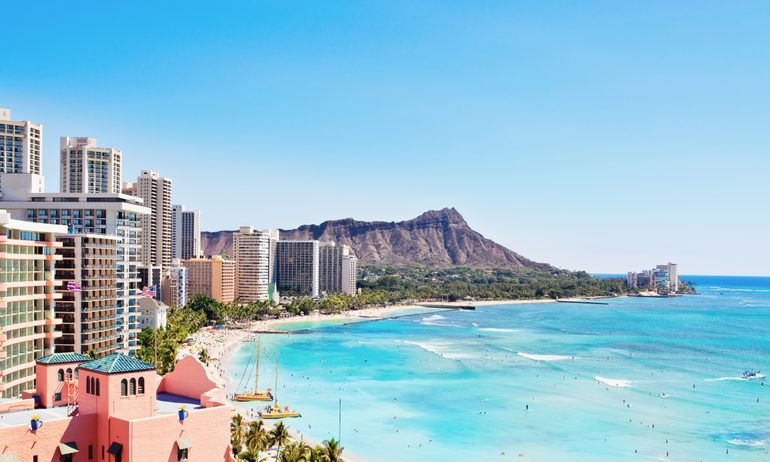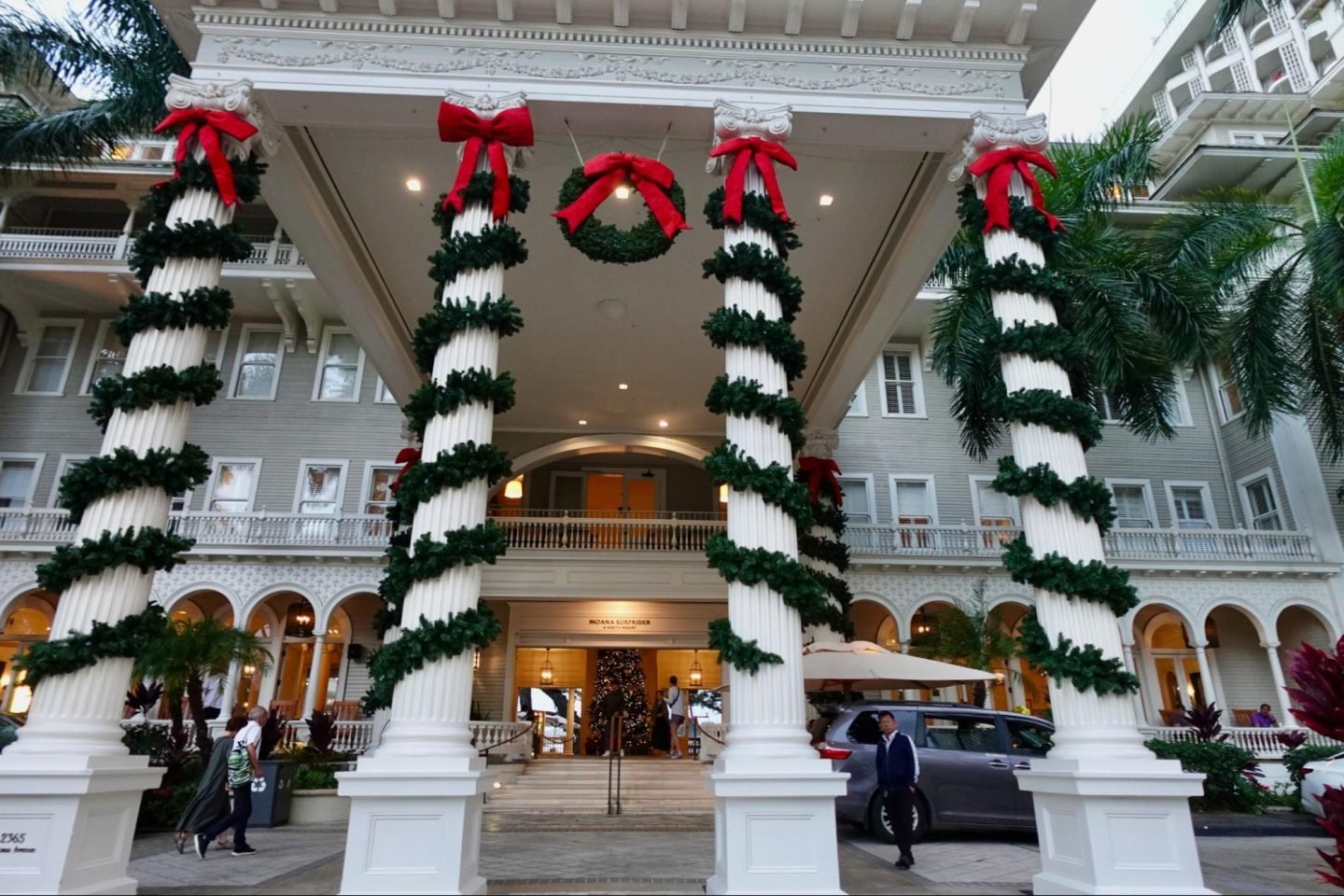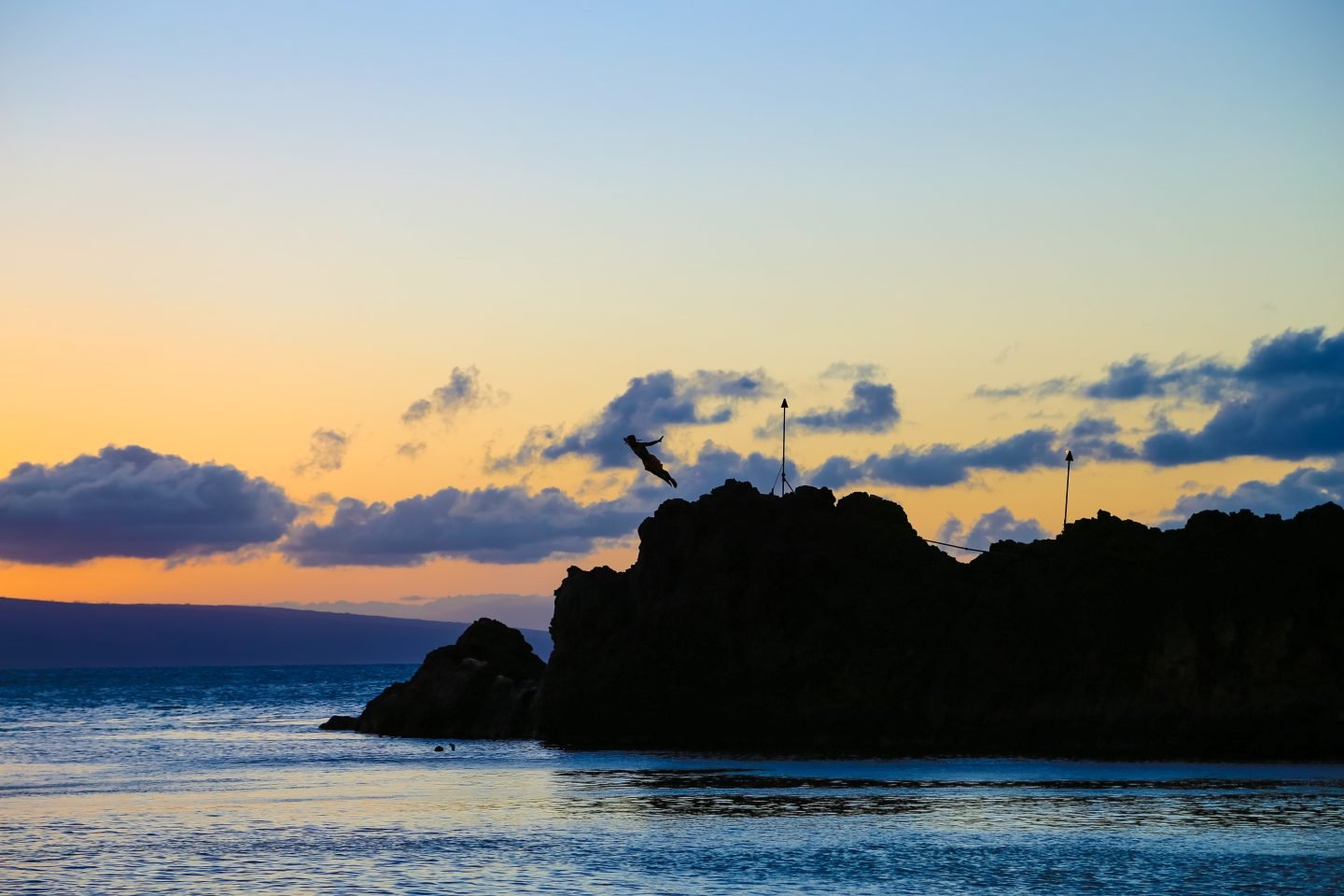How To Visit Hawaii On A Budget
The Aloha State is not as crowded as it once was. Seize the opportunity to nab a deal on a Hawaiian hotel deal.

Many or all of the products on this page are from partners who compensate us when you click to or take an action on their website, but this does not influence our evaluations or ratings. Our opinions are our own.
When deciding where to travel, Hawaii checks all the boxes for many tourists. The islands’ lush, tropical landscape provides a contrast from two years of mostly staying at home. It’s a far-off getaway that doesn't require a passport, and there’s no shortage of luxury.
But while Hawaii might have a laid-back, low-stress vibe, it's generally one of the most expensive vacations you can take in the U.S. Couple that with rising travel costs everywhere due to rapid inflation, and a trip to Hawaii this year likely won’t be cheap.
However, you can still save money on a Hawaiian vacation. Here’s how to travel to Hawaii on a budget.
Choose your destination
There are six major islands to visit in Hawaiʻi, which are Kauai, Oahu, Molokaʻi, Lānaʻi, Maui and the Big Island. Of those, four (Oahu, Maui, Kauai and the Big Island) are accessible from the U.S. mainland and are generally considered the primary islands for tourism. Of course, there are many more smaller Hawaiian islands.
There are all sorts of guides to help you choose the best island for you. Some swear Maui is best for honeymooners, and Kauai is best for outdoor adventures. But you came seeking to find how to visit Hawaii on a budget, in which case, the answer is nearly as clear as the water in Hawaii. By almost every metric, Oahu is the cheapest Hawaiian island to visit.
According to May 2024 data from the Hawai‘i Tourism Authority, hotel rooms in Oahu average about 21% less than the state as a whole. The average room rate in May 2024 across all of Hawaii was $342, but in Oahu it was just $272 (about $70 less per night).
If you're a budget traveler, you'll find Oahu's midscale and economy rooms are comparatively even cheaper. Midscale and economy rooms in Oahu cost $151 per night on average, which is 30% less than the average price for the same class of room across the entire state.
But even realize that prices vary depending on where in Oahu you're staying. Most tourists stay in either Waikiki, Ko Olina or the North Shore. Ko Olina tends to be the priciest of the bunch. But there aren't many North Shore hotels, which also can limit options.
Save on airfare to Hawaii
So you've chosen an island. While you can certainly save an annoying layover by booking a direct flight to that island, it might be cheaper to fly to one island, and then hop on a smaller, connecting flight. The practice is called island-hopping, and in Hawaii it's fairly convenient, as most flights between islands take less than an hour.
Compare deals using tools like Google Flights. Generally speaking though, most of the best interisland deals are for flights through Honolulu’s Daniel K. Inouye International Airport on Oahu.
Be flexible on dates, too. Southwest has plenty of interisland airfares for just $45 — but if you’re married to a specific flight time or book last-minute, realize that some flights cost more than $200.
Book with points or other airline rewards: There are many ways to book cheap Hawaii flights with points and miles, especially if you’re willing to transfer miles between partner airlines. Among the biggest airlines flying to Hawaii are Delta Air Lines, American Airlines and Southwest Airlines.
Do you have a Southwest Airlines Companion Pass that you're looking to maximize? Hawaii makes for an excellent opportunity to use it. The pass is essentially a buy-one-get-one deal on your Southwest flight, where you book a flight with cash or points, and you can book another at no cost aside from taxes and fees (typically just $5.60 per one-way trip).

Use hotel points or free night certificates to save on lodging
Most of the major hotel brands have a strong presence in Hawaii, which can be handy if you have hotel points or free night certificates.
Visiting Hawaii with Marriott Bonvoy

The Moana Surfrider, A Westin Resort & Spa. (Photo by Sally French)
Marriott is a massive hotel brand, so it unsurprisingly has a range of hotels for every budget. But on Oahu, it stands out for some especially delightful, historic properties. That includes some of Oahu’s most famous luxury hotels, including the historic Moana Surfrider, a Westin Resort & Spa, Waikiki Beach as well as The Royal Hawaiian, a Luxury Collection Resort, Waikiki.
Given their icon status, these hotels tend to be the most expensive. To experience these memorable properties without crushing your budget, turn to Marriott Bonvoy points. Those can be earned through Marriott credit cards as well as general travel credit cards that accrue points that transfer to Marriott.
Visiting Hawaii through Hilton Honors
Hilton is an especially big player in Hawaii, and its lodging runs the gamut from affordable to opulent. If you have a Hilton free night certificate, which can be earned through certain Hilton credit cards, head to Maui. There you’ll find the Grand Wailea, a Waldorf Astoria Resort. One of Hilton’s most grandiose resorts, the Grand Wailea hosts a 2,000-foot-long pool complete with waterfalls and slides. Standard nightly room rates can easily run more than $1,500, but free night certificates can cover it.
Other ways to visit Hawaii on a budget
Consider vacation rentals
If you’re traveling as a family or with a group, consider booking a vacation rental through a service like Airbnb or Vrbo. They are sometimes cheaper than hotels and typically don’t require you to pay resort fees, which are otherwise common. They also often have driveways and kitchens, so you can avoid expensive hotel parking and the cost of dining out.
Dine out strategically
Dining out can also eat up a huge chunk of your budget. Understand when you’re paying for mediocre food but a stellar view. If you’re up for adventure, head to a convenience store for fresh poke and Spam musubi, then find a beach (there’s no shortage of them) for a free, oceanfront dinner view.
Sidestep the paid luau
As far as entertainment, you can certainly pay hundreds of dollars for your group to experience a luau. While the array of entertainment and buffet food can be worth it for some travelers, there are plenty of free ways to watch hula, hear Hawaiian music and learn about the culture. Many major malls in Hawaii, such as Waikiki’s Royal Hawaiian Center mall, offer free shows and classes in lei making, hula, ukulele, lauhala weaving and more. On the Big Island, free coffee farm tours are abundant.
Some hotels also make their entertainment available to the public. Head to Marriott’s Sheraton Maui Resort & Spa to watch the nightly lele kawa (cliff jumping).

(Photo courtesy of Sheraton Maui Resort)
Swap ticketed activities for cheaper counterparts
Some major, ticketed tourist attractions offer some components of their tours for free. At the Maui Tropical Plantation, you might pay $25 for a tram tour, but you can still explore a good chunk of the grounds, including its market, craft studios and cafe, at no cost. On Oahu, Dole Plantation tours start at $7.75 per person, but purchasing a ticket might not be necessary. Admission to the grounds is free, and there you can typically find no-cost activities like pineapple-cutting and chocolate-making demonstrations, as well as a fish feeding pond.
Go for the free activities
Hawaii offers countless free outdoor activities like hiking, swimming and beachcombing. Many islands have free museums and cultural centers. And depending on when you go, you may find free concerts, festivals and cultural events. Check out NerdWallet's individual island guides for free activities in Hawaii.
The Aloha State might be one of the best places to travel to this year — just have a plan for how you’ll pay for it.
How to maximize your rewards
You want a travel credit card that prioritizes what’s important to you. Here are some of the best travel credit cards of 2025:
Flexibility, point transfers and a large bonus: Chase Sapphire Preferred® Card
No annual fee: Wells Fargo Autograph® Card
Flat-rate travel rewards: Capital One Venture Rewards Credit Card
Bonus travel rewards and high-end perks: Chase Sapphire Reserve®
Luxury perks: The Platinum Card® from American Express
Business travelers: Ink Business Preferred® Credit Card
Capital One Venture X Rewards Credit Card
Travel
Hotel
With a big sign-up bonus, travel credits, high rewards and airport lounge access, this card could be well worth its annual fee — which is lower than many competitors.




